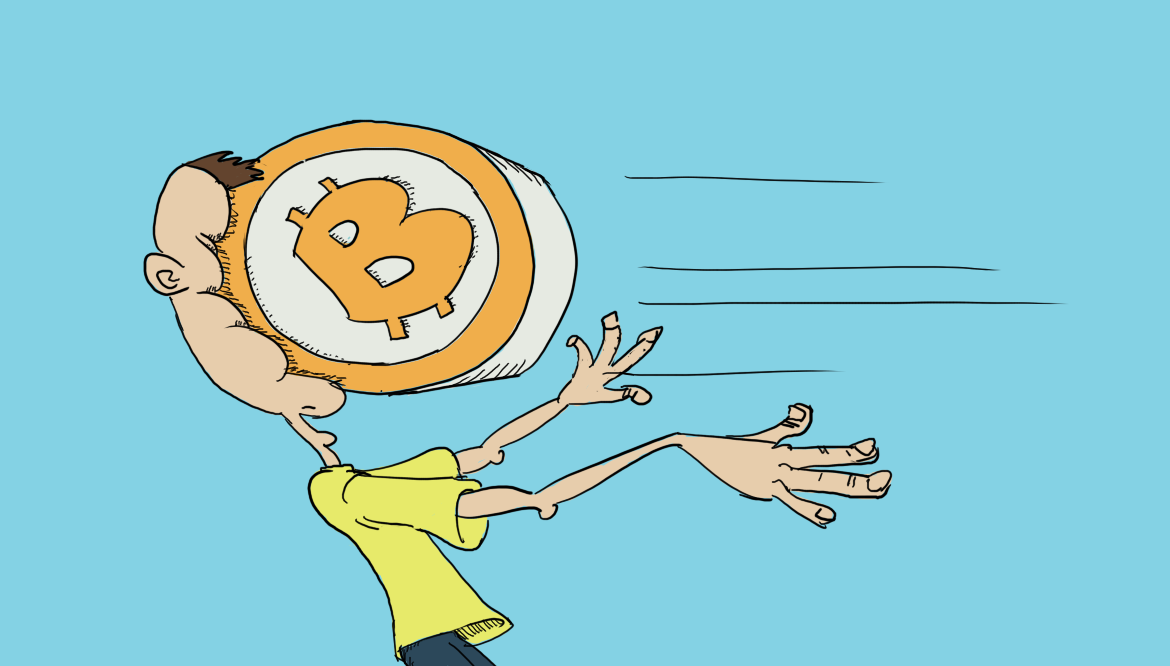HyperBitcoinization
I hear the term hyperbitcoinization a lot these days. It reminds me of some of the narratives that have long underpinned the gold sector.
When I first found a job in the financial industry many years ago, my boss (who was also the owner of the brokerage at which I worked) was a faithful gold bug. Leaning back in his worn chair, he’d map out his vision for the future. It usually went something like this…
Central banks of the world were on the brink of waging a war of competitive currency devaluations. Global hyperinflation would ensue. A crack-up boom would inevitably occur, or what economist Ludwig von Mises referred to as a katastrophenhausse. This would involve a complete break down of the monetary system. Paper money would become mere scrap paper, with gold left to take up the baton as money.
My boss (bless his soul) passed away a while back. And while he taught me much about the investment industry, he would have been bemused to see what has happened to the world. Rather than torrid inflation, central banks cannot seem to create enough of the stuff. Instead of a global revulsion of fiat-linked paper, people can’t seem to get enough of it. The proof? They are bidding bond prices so high that bond yields are plunging into negative territory!
Whoops, you just got bitcoin’d
Though he might not have recognized 2019, my boss would have certainly seen the similarities between his vision and that mapped out by the newest group to join the anti-fiat money camp: the bitcoiners.
There is a faction of the bitcoin community that preaches the idea of hyperbitcoinization. According to them, the world is on the verge of coughing up its fiat money and adopting bitcoin.
“That’s my philosophy!" my boss would have protested.
But hyperbitcoinization isn’t just a warmed-up version of my boss’s crack-up boom, bitcoin substituting for gold. It’s a more muscled-up version. As Daniel Krawisz intimated when he coined the term in 2014, hyperbitcoinization doesn’t need to be kicked off by governments engaging in a monetary race to the bottom. Hyperbitcoinization happens because bitcoin is already superior to fiat money.
And when hyperbitcoinization occurs, it’ll proceed faster than the hyperinflations of times passed, wrote Krawisz. Whereas countries can block competing fiat monies from being used domestically, it’s “easy for Bitcoin to cross borders and compete with anything."
Pierre Rochard, a former colleague of Krawisz’s, fleshed out the concept of hyperbitcoinization in a follow-up article that same year. “Bitcoins are not just good money, they are the best money," writes Rochard. This would eventually lead to bitcoin being used as an instrument for speculative attacks on fiat currencies. As people flee the “bad" domestic currency into “good" bitcoin (Rochard suggested Indian rupees), the rupee would collapse.
The rupee’s collapse would cause the world price of bitcoin to rise. People in other countries, say Switzerland, would notice this spike and buy, the reduction in demand for the franc pushing its purchasing power down. This leads to more bitcoin purchases, and a feebler franc, and on and on. And so the fiat collapse becomes generalized. In essence, the mere existence of bitcoin causes a global currency crisis.
Both Rochard and Krawisz emphasized that people don’t have a choice on the matter. You will literally be bitcoin’d. One day you will walk into your grocery store and it will have stopped accepting Visa cards. If you want to buy today’s meal, better go out and get your hands on some bitcoins. Krawisz portrays the idea with the following illustration:

Have we seen hyperbitcoinization?
How has hyperbitcoinization hypothesis fared? Over five years have passed since Krawisz published his article. And while bitcoin’s price is much higher now then it was in 2014, it’s hard to see evidence of a bitcoin takeover. No one that I know has been forcefully bitcoin’d. People all over the world are still using cards and banknotes to make payments.
What about Rochard’s speculative attacks? As I mentioned earlier, most developed nations are currently undershooting their inflation targets. This includes the U.S., Japan, Australia, and much of Europe. But hyperbitcoinization was supposed to cause the opposite. It was supposed to lead to a massive overshooting, one that central bankers were helpless to stop.
If developed countries haven’t seen hyperbitcoinization, what about developing ones? The two most notable currency collapses over the last five years have occurred in Venezuela and Zimbabwe. But these crisis were not a product of hyperbitcoinization, anxious Venezuelans and Zimbabweans collectively rushing out to sell pesos/Zimbabwe dollars and buy bitcoins. No, the governments in these countries were poorly run and lacked foreign support. And so the liabilities that they issued, including their currencies, collapsed in value.
Oddly, in the face of high inflation Zimbabweans and Venezuelans still use the local currency for much of their day-to-day spending. They also use U.S. dollars, especially for large ticket items and storing savings. This is because very strong network effects lock a currency in place. The fact that everyone in a particular location is already using a given unit to describe prices and make trades is advantageous, so people will be willing to bear large collapses in the unit’s value before they switch to something else.
This illustrates a major shortcoming of the hyperbitcoinization hypothesis. To overcome network effects, bitcoin can’t just be a bit better than a domestic currency. If it is to replace it, bitcoin has to be thousands of times better. And that just isn’t the case. Bitcoin certainly has plenty of good features. It is an open network, and resistant to censorship. But it is volatile and complicated to use. And fiat currencies aren’t as bad as its critics tend to portray it. Not only that, they are getting faster and cheaper:
Early strains of American bitcoinism were motivated by glacially-slow ACH transfers. But these strains have disappeared thanks to several new US instant payments initiatives:
-MasterCard Send (2015)/Visa Direct (2016)
-Zelle (2017)
-TCH’s Real Time Payments (2017)
-FedNow (2023)— John Paul Koning (@jp_koning) August 14, 2019
The improvement in fiat isn’t just a U.S. phenomenon. Payments systems all over the world are speeding up.
So where does bitcoin’s future lie?
The hyperbitcoinization thesis is just one of many competing narratives about bitcoin’s future. Nouriel Roubini has indecorously staked out the bitcoin-to-zero case. Others believe in a feel good co-existence theory, where bitcoin flourishes along with the dollar and a bunch of other cryptocurrencies. And there is the digital gold narrative. The idea here is that bitcoin isn’t competing with fiat currency as a medium of exchange, but with gold as a store of value.
Finally, I’ve outlined the case for thinking of bitcoin as a gambling technology. Bitcoin was never much of a monetary phenomenon, but a new financial game, much like poker or the lottery. But the very features that make it such a popular bet, its wild price movements, will always prevent it from competing with regular currencies as a payments medium.
Advocates of hyperbitcoinization will say that it is too early to judge. Bitcoin is young. It needs time to grow before its mere existence causes fiat currencies to collapse. My boss would no doubt have said the same about his crack-up boom hypothesis. And they all could be right. We may still see a hyperbitcoinization event. But another word for never is a long string of earlies.
Popular Blog Posts by JP Koning
 How Mints Will Be Affected by Surging Bullion Coin Demand
How Mints Will Be Affected by Surging Bullion Coin Demand
 Banknotes and Coronavirus
Banknotes and Coronavirus
 Gold Confiscation – Can It Happen Again?
Gold Confiscation – Can It Happen Again?
 Eight Centuries of Interest Rates
Eight Centuries of Interest Rates
 The Shrinking Window For Anonymous Exchange
The Shrinking Window For Anonymous Exchange
 A New Era of Digital Gold Payment Systems?
A New Era of Digital Gold Payment Systems?
 Life Under a Gold Standard
Life Under a Gold Standard
 Why Are Gold & Bonds Rising Together?
Why Are Gold & Bonds Rising Together?
 Does Anyone Use the IMF’s SDR?
Does Anyone Use the IMF’s SDR?
 HyperBitcoinization
HyperBitcoinization






 JP Koning
JP Koning 13 Comments
13 Comments










